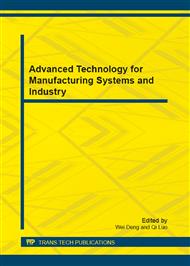p.3
p.9
p.16
p.21
p.26
p.31
p.38
p.43
Effect of Rotating Electromagnetic Field on Corrosion Behavior of CuNi10Fe1Mn Alloy Tube Billet
Abstract:
The effects of the rotating electromagnetic field (REF) on the corrosion behavior of the CuNi10Fe1Mn alloy tube billets were investigated by immersion test and electrochemical measurements. It is found that the imposing REF can be used to improve the resulting microstructures which affect the corrosion behavior of the CuNi10Fe1Mn alloy tube billet. The REF could induce the microstructure changes of the CuNi10Fe1Mn alloy tube billets and result in the gains refinement and the preferred orientation on the crystal plane. The improvement of the corrosion behavior is contributed to the change of microstructures of BFe10-1-1 alloy tube billets. The electrochemical measurements and immersion test show that the CuNi10Fe1Mn alloy tube billets with REF increase the corrosion resistance compared with the CuNi10Fe1Mn alloy tube billets without REF. Therefore all these observations suggested a nobler corrosion behavior of the CuNi10Fe1Mn alloy tube billets with the REF.
Info:
Periodical:
Pages:
3-8
Citation:
Online since:
November 2012
Authors:
Keywords:
Price:
Сopyright:
© 2012 Trans Tech Publications Ltd. All Rights Reserved
Share:
Citation:


